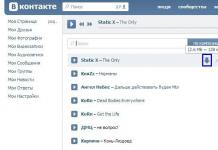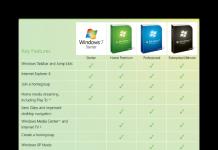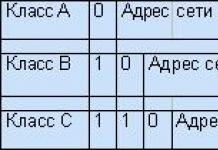How to use Google Scholar?
Google Scholar on the portal Google Scholar) is a freely available search engine that provides full-text search for scientific publications in all formats and disciplines. The system has been operating since November 2004, initially in beta version. The Google Academy Index includes most of the peer-reviewed online journals in Europe and America from major scientific publishers.
It is similar in function to the freely available Scirus systems from Elsevier, CiteSeerX and getCITED. It is also similar to paid subscription based tools such as Elsevier in Scopus and Thomson ISI's .
Google Scholar's advertising slogan - "standing on the shoulders of giants"- a tribute to scientists who have contributed to the development of science over the centuries and provided the basis for new discoveries and achievements. Presumably borrowed from Newton's quote: "If I have seen further than others, it is because I have stood on the shoulders of giants."
The Google Academy is Russified, which means that scientific articles, theses, books, abstracts, reviews of academic publishers and professional societies, online repositories of universities and other popular scientific and educational sites are open to the user.
Google Scholar allows users to search for digital or physical copies of articles, whether online or in libraries. "Scientific" search results are generated using links from full-text journal articles, technical reports, preprints, dissertations, books, and other documents, including selected web pages that are considered "scientific". Because most scientific Google search results are direct links to commercial journal articles, most users will only be able to access a brief abstract of the article as well as a small amount of important information about the article, and may have to pay to access the full article. Google Scholar just as easy to use as a regular Google web search, especially with "Advanced Search", which can automatically narrow search results to specific journals or articles. The most significant keyword search results will be listed in the order of the author's ranking, the number of citations that are associated with her and their relationship to other scientific literature, and the publication ranking of the journal in which she is published.
Thanks to its "cited in" features, Google Scholar provides access to abstracts of articles that cite the article in question. It is this feature in particular that provides the citation index previously available only in and the Web of Knowledge. This index can be used for webometric ranking of sites. Due to its function "Related Articles" Google Scholar presents a list of closely related articles, ranked primarily by how similar those articles are to the original result, but also by the importance of each article.
What does registration in Google Scholar give?
If before registration, Google Academy could only be used as a means of searching for articles by other authors, then after registration, this site will help you track the dynamics of citing your own works. You can not only see the total number of citations, but also find out who and when referred to your work, build a citation chart and determine the currently popular scientometric indicators.
Also, users of the "Academy" can make their profile available, and then the link to your profile will be visible to users viewing your work. Perhaps this will help you make useful contacts with colleagues who study the same issues around the world.
Google Scholar can make your work more visible to the scientific community around the world. Google Scholar uses information about digital library resources to create per-article links to library servers in search results. With the help of the database database being created, the user can find the desired book in the library closest to him.
Watch online: How to use Google Scholar
Indexing Limitations and Criticism of the Ranking Algorithm
 While most academic databases and search engines allow users to select one of the factors (such as relevance, number of citations, or publication date) to rank results, Google Scholar ranks results using a combined ranking algorithm. Google Scholar places particular weight on the number of citations and words included in the title of a document. As a result, the first search results often contain highly cited articles.
While most academic databases and search engines allow users to select one of the factors (such as relevance, number of citations, or publication date) to rank results, Google Scholar ranks results using a combined ranking algorithm. Google Scholar places particular weight on the number of citations and words included in the title of a document. As a result, the first search results often contain highly cited articles.
A significant problem with Google Scholar is the lack of coverage data. Some publishers do not allow her to index their journals. Magazines Elsevier were not included in the index until mid-2007, when Elsevier made most of his content on ScienceDirect available to Google Scholar in Google Web Search. Google Scholar does not publish a crawl list of scientific journals. The frequency of its update is also unknown. However, it provides easy access to published articles without the hassle of some of the most expensive commercial databases.
In addition, this academic search engine is currently filled with pseudoscientific articles, making it a potentially dangerous database for anyone doing serious research, from students to academics. The problem is that Google Scholar strives to index as fully as possible articles appearing in scientific journals. However, many unscrupulous publishers use indexing mechanisms Google Scholar and include in its index numerous pseudoscientific or low-quality publications that would not pass the peer-review process in scientific journals.
In order to check the degree of development of the chosen scientific problem and engage in a full-fledged analysis of existing scientific works, it is not enough just to search in Yandex or Google. For these purposes, special scientific search services have been created. These include:
- Web of Science;
- Scopus;
- Google Scholar.
The first two search engines are paid. And one of the best and largest search services is Google Scholar (Google Academy). It is part of Google search and indexes the full texts of scientific articles, publications in all sciences and scientific disciplines, in all formats.
Benefits of Google Scholar over other search engines
Here are just some of the benefits of this search engine:
- Firstly, it is an easily accessible and free option for searching for published dissertations, peer-reviewed articles, authoritative monographs and other specialized scientific literature that has come out of authoritative publishers of various world universities, professional companies and associations, and scientific organizations.
- Secondly, the Academy is Russified and fully adapted for the Russian-speaking audience (unlike other analogues).
- Thirdly, the Google Scholar system makes it possible to search for full-text articles from magazines and newspapers, preprints and other paper documents. The Academy systematizes information from most of the peer-reviewed journals (both online and offline) of the most reputable scientific publishers in the US and Europe.
- Fourthly, the search algorithm is almost no different from working with the usual search engines with the issuance of links suitable for the query. Using these links, you can easily find articles that contain the abstracts you are looking for. Of course, most of the articles, unfortunately, are closed. Viewing the full version is possible only after making certain monetary contributions. But still there are texts that are provided free of charge in the full version without restrictions.
Features of Google Academy
Google Scholar Search is more often used as a standard search service, which has an "advanced search" feature that allows you to search for articles:
- on this topic;
- by author;
- by city and year of publication;
- by the rating of the author of the article;
- by the number of references to the publication;
- by the rating of articles that link to the article you are looking for;
- according to the rating of the journals in which the articles are posted;
- periodicals (magazines and newspapers);
- on deposited articles in repositories;
- in the repositories of universities.
In addition, after registering with the Academy, each researcher can:
- find out the number of citations;
- find similar or similar articles on the subject;
- find all versions of the publication;
- save the article in your own systematized book depository;
- cite the publication in GOST format.
What is Google Scholar Citations?
As part of the Google Academy, there is a special opportunity to track the citation of your own articles. This is very convenient, because thanks to the service, you can find out the names of those who refer to their own published articles, summarize all citations in the form of diagrams to demonstrate their progress in science. You can also make your profile open and public. Then anyone will be able to get acquainted with the available results by name.
Pros of Google Scholar Citations:
- in Google Academy, the "Citation" section underlies the definition of the citation index, which was previously possible only in Web of Science and Scopus;
- a wider systematization of the entire publication activity of the author compared to the RSCI, WoS and Scopus, since information is classified according to a clearly regulated list of publications;
- the greatest breadth of the presented materials, tk. The Academy indexes all sites and repositories of universities, as a result of which almost all publications available on the Internet (except closed ones) automatically fall into the personal profile.
Cons of Google Scholar Citations:
- most of the Russian-language journals, conference materials are not included in the database;
- it does not contain data from closed sources and there are no publications without electronic analogues (or which are not mentioned in electronic sources);
- there is no guarantee of the veracity of the data added to the author's own personal profile (this is a matter of personal responsibility and adherence to scientific ethics);
- some publishers prefer not to have their journals indexed by Google Scholar;
- refresh rate not shown.
Features of Google Scholar Citations:
- the author's profile is designed as a hyperlink, by clicking on which you can immediately see the full list of published works;
- the author can quickly find his own indexed articles;
- the author can edit information about his articles, add missing articles that the system does not know about;
- in case of an error, the author can delete other people's articles from his profile;
- there is a function to automatically notify the author when new published works are published (usually within two weeks after the publication of a new work on the Internet);
- the ability to add co-authors and view their publications;
- there is a “cited in” section, where you can display a list of articles that link to the publication you are viewing;
- the "Related articles" section offers a list of articles that are similar in content to the article in question, and they are ranked by the level of similarity with the main article;
- there is a certificate of scientometric indicators (h-index, citation statistics).
- import of citations into programs for organizing bibliographic information (BibTeX, RefWorks, EndNote, RefMan) and loading them into author identification systems (ResearcherID, ORCID).
How to work with the Google Scholar system?
As mentioned above, everyone can use this search engine absolutely free. You just need to register on the site (scholar.google.ru), log in with your Google account and fill out your own profile.
Your profile allows you to track not only the citation index of your articles, but also additionally calculate the Hirsch index and display the dynamics of your citations. You can also make your profile public and establish close scientific contacts with scientists who specialize in the same or related scientific problem. This is very useful in today's globalized world, where scientific discoveries are most often made at the intersection of different sciences, scientific schools and scientific approaches. Google Scholar provides its registered users with the opportunity to work in almost all libraries in the world.
At the same time, it has been proven in practice that the quality of scientometric data in Google Academy is not lower than similar databases. Therefore, information from the Academy can be taken seriously when evaluating the publication activity of a particular scientist.
Problems and disadvantages of Google Scholar
Unfortunately, many publishers refuse to provide the right to index their publications. An even greater disadvantage is the presence of a large number of pseudoscientific articles, tk. many unscrupulous publishers provide low-quality journals for indexing.
If you look for a highly professional article on a specific scientific problem, then there is a risk of immersing yourself in "scientific consumer goods". Therefore, when using Google Academy, you need to be vigilant and independently, with all your attention, evaluate the scientific value and significance of the articles found in the search.
Google Scholar is a search engine that indexes the full texts of scientific publications of all formats and disciplines. Google Scholar includes articles that are published in journals, articles that are stored in repositories or located on the websites of scientific journals, personal pages of scientists.
In order to register in the Google Scholar database, you must first create a google account. You will be prompted to enter some personal data, create an email *gmail.com.
After registration, go to the main page of the Google search engine and click the "Login" button in the upper right corner. In the new window, enter the mailbox address and password we specified.

Registering for Google Scholar

You need to go through several registration steps.
Attention (!)- in the "email" field, you must enter not your personal mailbox, but the institution in which you work.
In order to find out or receive an email from your institution, you need to contact the relevant information service or department. You can also make a report with a request to provide e-mail boxes on the official domain of the institution to one or more employees. In our case, we made a report addressed to the first vice-rector of the university from the head of the department. You can have a sample report.

Google Scholar will perform a search query based on your Last Name, First Name and Middle Name and will offer to credit or disprove the authorship of some articles that are already indexed. You can skip this step if you are not the author of the found articles.

Choose to update or not the list of articles in your profile and move on.

After creating a profile, you need to activate it by clicking on the link that will be sent to your email address. Here you can add articles, view citation statistics
The Google search engine has created a special tool "Google Scholar" for searching scientific and educational literature scholar.google.com, which allows you to search for peer-reviewed articles, dissertations, books and other scientific publications on various sites, from personal sites to large international repositories (repositories) and databases of publications.
Create this profile first, and then use the export button to transfer all data to other profiles.
"Google Academy" not only searches for scientific publications, but also sorts them, assigns them to individual authors, and provides them (authors) with a service to manage their profile. This service is called "Google Scholar Citations" (GSC for short) or in Russian "Google Scholar Citations" or "Google Scholar Author Profile". You can access this service by opening the "Google Scholarship" page scholar.google.com on the Internet and clicking on the link "My Citations" (for more details, see the instructions).
Why do I need a Google Scholar Citations profile?
First of all, the scientist himself (teacher, researcher) needs it. The GSC profile performs several important and convenient functions:
- Systematization of all publishing activity, the widest of all existing services. Scopus, webscience or RSCI (e-library) collect information about publications only according to a strictly regulated list of publications. Most Russian-language journals and conference proceedings are not included in these databases. Google Scholar indexes all university websites and university repositories, so almost all papers are automatically included in the GSC profile.
- Convenient work with the list of publications. You yourself determine the articles of which you are the author, you can edit (clarify) their description, add and delete works.
- When other scientists search Google Scholar, they will be able to look at more than just one of your publications. With a configured GCS profile, your last name in the description of the publication turns into a link, by clicking on which you can see the entire list of your works, see the most interesting (most cited), see new works
- Information about scientometric parameters such as Citation statistics, h-index, i10-index.
- Automatic notification when new links to your publications appear (usually such confirmation comes 1-14 days after the publication of a new work on the Internet, and the publication itself may be in a closed database).
- Automatic notification when your new posts appear.
- Export list of publications in BiBTeX, EndNote, RefMan formats. These formats are understood by researchgate.net systems and analogues, personal cabinets of scientometric systems. Having ordered the list of publications once, you will always have an up-to-date list, and using BiBTeX you can work with it to design new publications in LaTeX format.
- The international Webometrics Ranking World Universities uses the Citation Statistics scientometric parameter of the nine most cited university scientists as one of the ranking parameters. You can look at this list for BSU at the link
Google Scholar or Google Academy is a free full-text search engine for scientific publications in all formats and disciplines. The project was launched in November 2004. Today, this system is an indispensable tool for any researcher.
The Google Academy repository contains information from many peer-reviewed online journals of the largest scientific publishers in Europe, America and Russia, preprint archives, publications on the websites of universities, scientific societies and other scientific organizations. The system searches across various disciplines and sources: articles, abstracts, books, abstracts and judicial opinions from academic publishers, professional societies, online repositories, universities and other websites. "Google Scholar" searches for scientific research from all over the world, looking for articles, including in Russian.
The advertising slogan of the Google Academy - "standing on the shoulders of giants" - is taken from the well-known saying of Isaac Newton "If I have seen further than others, it is because I stood on the shoulders of giants", as a sign of respect for scientists who have made an incommensurable contribution to the development of science on over the centuries and laid the foundation for modern discoveries and achievements.
In terms of its functionality, the Google Academy is similar to such specialized scientific search engines, electronic archives, article and link search tools as Scirus, Science Research Portal, Windows Live Academic, Infotrieve - artical finder, CiteSeerX, ResearchIndex, Scientopica and GetCITED. Not least, it allows you to work for free, unlike similar sites that provide access to publications after a paid subscription, such as Scopus and Web of Science.
The following features of Google Scholar can be distinguished:
- search for scientific literature from any place convenient for you;
- allows you to calculate the citation index of publications and find works, citations, authors and articles containing links to those that have already been found;
- the ability to search for the full text of the document both online and through libraries;
- view the latest news and events in any field of research;
- you can create a profile of a public author with links to your publications.
So, let's take a closer look at the available functions of this search engine.
1. Google Scholar Search
The search for a full-text document is carried out not only among publications available online, but also in libraries or paid resources. However, some publishers do not allow the Academy to index their journals.
Search results are ranked by relevance. In accordance with this algorithm, full-text documents are included in the statistics, taking into account the rating of the author or publication that published it and the number of citations from the publication. Thus, the most popular articles are displayed in the first links.
Here you can also sort documents by date and citation.

There is also an advanced search that allows you to sort publications by a specific word / phrase, title, author / edition, for a specific period.
2. Quoting and linking
To use this feature, you must create a public Google Scholarship profile, complete it, and upload the relevant publications. Then, when you request your name in the search engine, the publications you uploaded will appear. Perhaps this will help you make useful contacts with colleagues who study the same issues around the world.
This service will quickly and easily find your articles, regardless of their number and the presence of co-authors.

It is possible to add not only single, but also groups of articles. Citation rates are calculated and updated automatically as the service discovers new citations of your work on the web.
It should be borne in mind that the system does not distinguish between namesakes and, conversely, identical links received from different/mirror servers are treated as different, just like different versions of links to the same work. Therefore, significant efforts and time are required for additional processing of the results of determining citation.
When forming a reference, you will have the opportunity to choose one of the international or Russian standards for the design of bibliographic references.
3. Availability of a guide for webmasters
This documentation describes the technology for indexing websites with scientific articles from Google Scholar. It is written for webmasters who would like to include their documents in the "Academy" search results.
Detailed technical information will also be useful to individual authors who have the opportunity to publish the work on their website and add a link to it on the Google Scholarship publishing page.
With this service, you can increase the worldwide relevance and accessibility of content by working with publishers of scientific information to index peer-reviewed papers, dissertations, preprints, abstracts and technical reports from all areas of research in order to make them available on Google and Google Scholar ".
4. Metrics or indicators
This section allows you to quickly assess the presence and significance of recent articles in scientific journals, as well as analyze the relevance of topics for the author.
Here you can view the TOP 100 publications in multiple languages, sorted by their 5-year h-index and h-median. H5-index - h-index for articles published in the last 5 full years. H5-median is the median of the number of citations of publications that are included in the h5-index.
It is also possible to study publications in specific scientific fields. To do this, you just need to select the area of \u200b\u200bresearch that interests you. Here you can also select a subcategory for this area.
As of today, work with categories and subcategories is available only for English editions.

5. Library
Google Scholar uses information about digital library resources to create per-article links to library servers in search results. With the help of the database being created, the user can find the right book in the library closest to him.
The mission of the Google Academy is to collect scientific information from all over the world in one resource and organize its universality, accessibility and usefulness.
The problem of searching and collecting information is one of the most important problems in writing a scientific publication. Currently, the problem of having too much information that is not reliable, high-quality and relevant is relevant.
Thus, the relevance of the problem is determined by the contradiction between the large flows of information circulating in the modern world and the inability to quickly and efficiently search for it on the Internet.
When searching on the Internet, two components are important - completeness and accuracy. Usually this is all called in one word - relevance, that is, the correspondence of the answer to the question. Important indicators are the reach and depth of the search engine, crawl speed and relevance of links (the speed of updating information in this database), search quality (the closer to the top of the list is the document you need, the better the relevance works).
The scientific search engine "Google Academy" is a resource that can solve the problem of finding information and has the ability to quickly and accurately sort it. Due to its advanced functionality, it allows you to find up-to-date, complete and reliable information in any field of research with a minimum of time. According to the statement of the creators, Google Scholar allows you to identify the most relevant scientific research from the entire mass of work carried out in the world.
The features of this scientific search system can leave a very pronounced imprint on the processes of intellectual competition and even lead to certain changes in the general nature of scientific results and ideas that survive in the competitive struggle and determine the future of science.
This opportunity is invaluable for the development of scientific research. Since on the basis of the information received, the author can fully work on the originality and novelty of scientific research.
ONLINE Scientific Journal "Child and Society"
Publisher: International center for the childhood and education (ICCE)
Online ISSN: 2410-2644




































